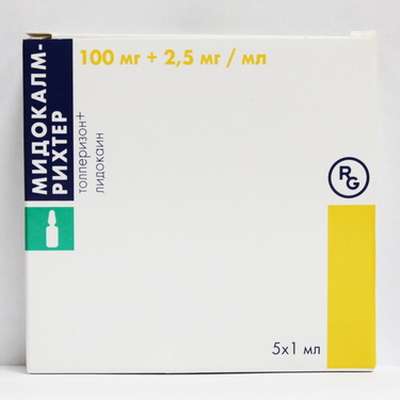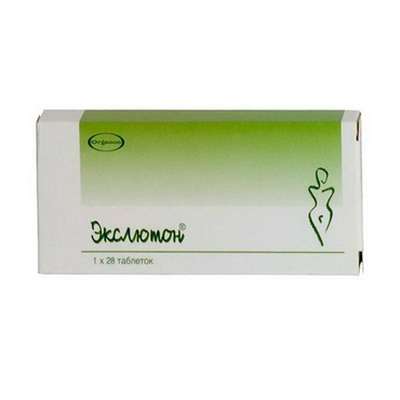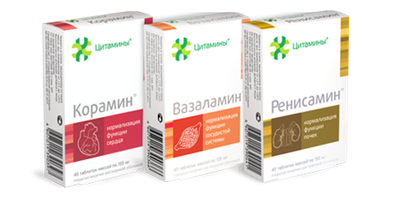Betaserc (Betahistine) tablets - Instructions for Use, Dosage, Side Effects, Reviews
26 Mar 2017
Synonyms: Alvert, Balanse, Betagam, Beta-Histina Bluepharma, Betahistina, Betaistina ratiopharm, Betaserc, Betavert, BHT, Histavert, Histigo, Invert, Meni, Neuvert, Serc, Urutal, Vernil, Vertin, Vertix, Acuver, Agiserc, Alfinor, Antivom, Asniton, Avertin, Bestin, Betabare, Betabere, Betabire, Betagan, Betagen, Betahistin Actavis, Betahistin Arcana, Betahistin Mylan, Betahistin Nucleus, Betahistin Orifarm, Betahistin PharmaS, Betahistin ratiopharm, Betahistin Pliva, Beta-Histina Actavis, Beta-Histina Generis, Beta-Histina Germed, Betahistina MK, Beta-Histina Mylan, Betahistina, Betahistine - Sunve Pharm, Betahistine - Tiange Pharm, Betahistine 2 HCl Accord, Betahistine 2HCl A, Betahistine 2HCl Abbott, Betahistine 2HCl Biogened, Betahistine 2HCl DOC Generici, Betahistine 2HCl GenRx, Betahistine 2HCl Mylan, Betahistine 2HCl PCH, Betahistine 2HCl Wise, Betahistine Actavis, Bétahistine Actavis, Betahistine Apotex, Bétahistine Arrow, Bétahistine Biogaran, Bétahistine Biphar, Bétahistine Bouchara Recordati, Betahistine diHCL Actavis, Betahistine diHCl Apotex, Betahistine diHCL CF, Betahistine Dihydrochloride, Betahistine Dihydrochloride-Generics, Bétahistine EG, Betahistine Merck, Betahistine Mylan, Bétahistine Mylan, Betahistine PLIVA, Bétahistine Qualimed, Bétahistine Ranbaxy, Bétahistine Ratiopharm, Bétahistine RPG, Bétahistine Sandoz, Betahistine Teva, Bétahistine Teva, Betahistine Walmark, Bétahistine Winthrop, Bétahistine Zydus, Betahistine.2HCl Disphar, Betahistine.2HCl Sandoz, Betahistine.2HCl US Pharmacia, Betahistine, Betahistine-IPS, Betahistin-Mepha, Betahistin-ratiopharm, Betaistina Actavis, Betaistina Angenerico, Betaistina DOC, Betaistina Mylan, Betajuna, Betakele, Betakile, Betakole, Betakule, Betalan, Betalane, Betalase, Betalene, Betalese, Betalose, Betalune, Betaluse, Betanil Forte, Betarevin, Betareze, Betarive, Betarove, Betaruve, Betaserc, Beta-Synto, Betavert N, Betistine, Bhistine, Blestar, Blestar forte, By-Vertin, Clensan, Divetrin, Dizynil, Doc Betahi, Docbetahi, Ecycle, Elven, Fidium, Fortamid, Histigen, Histimerck, K.U.N., Ketozine, Labirin, Lavistina, Lectil, Marbeta, Menaril, Meniex, Merison, Meterlon, Microser, Microserc, Neatin, Nilasen, Nisulin, Nodizy, Normini, Novo-Betahistine, Polvertic, Rislon, Riva, Ronistina, Serc, Sincrover, Slonlin, Teva-Betahistine, Tiniril, Travelmin, Undizz, Urutal, Vasomotal, Vasoserc Fort, Vasoserc, Vasoserc-BID, Verdiz, Vergo, Verhist, Verist, Vertigen, Vertigon, Vertimed, Vertisan, Vertiserc, Vertix, Verum, Vestibo, Visep, Xi Qi Ting, Zenostig, Zevert, Aequamen, Aequamen forte, Ankumin, Behistin, Besutin, Betadine, Betahis, Betahistane, Betahistin AL, Betahistin STADA, Betahistine-Eurogenerics, Betahistin-ratiopharm, Betavert, Bymeniere, Darvon, Deanosart, Extovyl, Histigo, Meniace, Menietol, Menitazine, Meris, Merislon, Merlin, Mertigo, Meslon, Mesytol, Metahislon, Mitapop, Noverty, Novirex, Papaverian, Remark, Ribrain, Vastigo, Vercure, Versilon, Vertex, Vertilate, Windpin, Merislon, Suzutolon.
Active substance: Betahistine dihydrochloride.
Betahistine dihydrochloride (brand names Veserc, Serc, Hiserk, Betaserc, Vergo) is an anti-vertigo drug. It is commonly prescribed for balance disorders or to alleviate vertigo symptoms associated with Ménière's disease.
Betahistine chemically is 2-[2-(methylamino)ethyl]pyridine, and is formulated as the dihydrochloride salt. Its structure closely resembles that of phenethylamine and histamine.
Betahistine has a very strong affinity as an antagonist for histamine H3 receptors and a weak affinity as an agonist for histamine H1 receptors
Betahistine has two mechanisms of action. Primarily, it a full agonist on the H1 receptors located on blood vessels in the inner ear. This gives rise to local vasodilation and increased permeability, which helps to reverse the underlying problem of endolymphatic hydrops.
More importantly, betahistine has a powerful antagonistic effects at H3 receptors, thereby increasing the levels of neurotransmitters histamine, acetylcholine, norepinephrine, serotonin, and GABA released from the nerve endings. The increased amounts of histamine released from histaminergic nerve endings can stimulate receptors. This stimulation explains the potent vasodilatory effects of betahistine in the inner ear, that are well documented.
Betahistine seems to dilate the blood vessels within the inner ear which can relieve pressure from excess fluid and act on the smooth muscle.
It is postulated that betahistine's increase in the level of serotonin in the brainstem inhibits the activity of vestibular nuclei.
ATC - N07CA01 Betahistine.
Pharmacological group - Angioprotectors and proofreaders of microcirculation; Gistaminomimetcs.
Nosological classification (ICD–10)
G45.0 syndrome vertebrobasilar arterial system;
G46 Vascular syndromes of brain in cerebrovascular diseases;
G93.4 Encephalopathy, unspecified;
H81.0 Meniere’s Disease;
H81.9 Violation of vestibular function, unspecified;
H83.9 disease of the inner ear, unspecified;
H91 Other hearing loss;
I67.2 Cerebral atherosclerosis;
I69 Effects of cerebrovascular diseases;
T90.5 Effects of intracranial injury;
Z100 * Chapter XXII Surgical Practice.
Betaserc (Betahistine) Composition, structure and packing
Tablets are white, or almost white, round, biconvex, with beveled edges, with a mark on one side and engraved “289” (“267”, “289”) on both sides of the risks and the “S” icon on the “∇” on the other side of the tablet;
Betaserc (Betahistine) Pharmacological action
Synthetic analogue of histamine. Agonist of histamine H 1 receptor vessels of the inner ear and an antagonist of histamine H 3 receptors vestibular nuclei of the CNS. According to preclinical studies by relaxing the sphincter pre-capillar vessels of the inner ear improves blood circulation in the inner ear vascular shelf.
Dose-dependently reduces the generation of action potentials in neurons of the lateral and medial vestibular nuclei. Accelerates the recovery of vestibular function after unilateral vestibular neurectomy, faster and easier central vestibular compensation (due to antagonism with histamine H 3 receptors). Eases symptoms of Meniere’s syndrome and vertigo.
Betaserc (Betahistine)Pharmacokinetics
When oral betahistine is rapidly and almost completely absorbed from the gastrointestinal tract. After absorption, the drug is rapidly and almost completely metabolized to form the inactive metabolite 2-pyridylacetic acid.
Upon receiving the drug at a dose of about 8–48 mg of 85% of the initial dose is found in the urine as a 2-pyridylacetic acid. Excretion of betahistine kidneys or through the intestines slightly. The elimination rate remains constant at 8–48 mg oral preparation, indicating linearity betahistine pharmacokinetics, and suggests that the metabolic pathway is involved remains unsaturated. Upon receiving the food preparation the maximum concentration of drug in the blood is lower than in the fasting state. However, the total absorption of betahistine same in both cases, indicating that ingestion of only slows down the absorption of betahistine.
Betaserc (Betahistine) Dosage
The drug is prescribed inside while eating. The dose should be individualized depending on the response to treatment.
Adult dose is 24–48 mg/day. Betaserk 8 mg Betaserk 16 mg Betaserk 24 mg
Dose/multiplicity of reception Table 1–2. 3 times/day 1/2–1 tab. 3 times/day 1 tab. 2 times/day
16 mg tablet 24 mg tablet can be divided into two equal parts. To do this, place the tablet on a hard surface Valium up and push it with your thumb.
Improvement sometimes observed only after a few weeks of treatment, and a stable therapeutic effect - after several months of treatment. There is evidence that use of the drug early in the disease prevents its progression and/or hearing loss at a later stage.
Despite limited data from clinical studies, extensive post-marketing experience suggests that dose adjustment in elderly patients is not required.
Special clinical studies in patients with renal and/or hepatic impairment have not been conducted, but postmarketing experience suggests that dose adjustment in these patients is not required.
Betaserc (Betahistine) Overdose
There are several known cases of overdose.
Symptoms: slight and moderate nausea, drowsiness, abdominal pain were observed in some patients after taking the drug at doses up to 640 mg. More serious complications (convulsions, cardiopulmonary complications) were observed at the deliberate acceptance of betahistine in high doses, especially in combination with other drugs overdose.
Treatment: symptomatic therapy.
Betaserc (Betahistine) Drug Interactions
Studies in vivo, aimed at studying the interactions with other drugs have not been conducted.
Based on in vitro, can assume the absence of inhibiting the cytochrome P450 isozymes in vivo.
Betahistine is an analogue of histamine blockers interaction Betahistine H 1 histamine receptors could theoretically affect the effectiveness of one of these drugs.
The patient should inform the doctor about taking any medicines now or in the recent past.
Betaserc (Betahistine) at Pregnancy and lactation
Available data on the use of betahistine in pregnant women is not enough. The potential risk for humans is unknown. Betahistine not be used during pregnancy except absolutely necessary.
It is not known whether betahistine with breast milk. Should not be prescribed the drug during breastfeeding. The question of appointing a drug Betaserc mother should be taken only after comparing the benefits of breastfeeding to the potential risk to the infant.
Betaserc (Betahistine) Side effects
From the digestive system: often (from ≥ 1/100 to <1/10) - nausea and dyspepsia.
The nervous system: common (≥ from 1/100 to <1/10) - headache. The incidence of headache patients treated betahistine was similar to the frequency of cases in the group of patients receiving placebo.
In addition to these effects identified in clinical trials, post-marketing use in the process and in the scientific literature reported the following adverse effects. Insufficient data are available to estimate their frequency.
From the digestive system: moderately expressed vomiting, gastro-intestinal pain, bloating. Typically, these effects usually disappear after dosing with food or after a dose reduction.
Allergic reactions: hypersensitivity reactions, including angioneurotic edema, urticaria, pruritus, rash, anaphylactic reaction.
Betaserc (Betahistine) Indications
Meniere’s syndrome, characterized by the following symptoms:
Dizziness (accompanied by nausea, vomiting);
Hearing loss (deafness);
Tinnitus.
Symptomatic treatment of vestibular vertigo (vertigo).
Betaserc (Betahistine) Contraindications
Pheochromocytoma;
Hypersensitivity to the drug.
Betaserk not recommended for use in children and adolescents under the age of 18 years due to insufficient data on safety and efficacy.
With caution and under close medical supervision should be administered to patients with Betaserk bronchial asthma, gastric ulcer and/or duodenal ulcer.
Betaserc (Betahistine) Cautions
Precautions should be prescribed to patients with gastric ulcer or duodenal ulcer history. In the period of the drug, patients with pheochromocytoma and asthma should be under medical supervision.
Risk on tablets 24 mg tablets intended for breaking to facilitate swallowing and is not intended to divide it into 2 equal doses.
Effects on ability to drive vehicles and management mechanisms
It is believed that the effect of betahistine on the ability to drive vehicles and other mechanisms is absent or negligible, because in clinical trials involving the use of betahistine, effects, potentially influencing this ability has been detected.
Betaserc (Betahistine) Reviews
Ben, 35 years, Tablets from vertigo Betaserc - Effective with dizziness and noise in my head.
Advantages:
Efficient, Betaserc high-quality drug.
This is the original drug. The best of our betahistine, is nothing much. For those who suffer from dizziness, noise in my head, or someone just storm from side to side, it's a godsend.
Usually these symptoms indicate cerebro-sclerosis or just on the cerebral circulation. You can also try it on drink headaches.
Tablets gives very well help in the first week of admission, but the rate should be brought to a victorious conclusion. Duration of treatment establishes a physician, I believe that the time frame is - from one month to six months. The course may be repeated one or two times a year. And someone is enough for one course, everything depends on the disease.
Also, the dosage is adjusted individually. Very often, this drug is prescribed neuroscientists, but we therapists and paramedics often use a good drug.
In general, if you or your loved ones dizziness, buzzing in the ears, headaches and loss of coordination - consult with your doctor about this medication.
Marine, 33 years , Tablets from vertigo Betaserc - good preparation from vertigo
Advantages:
good help for dizziness, tinnitus, and also serves for prevention
My mother suffers from hypertension for over 20 years and constantly drink tablets, 2 times a year she goes drip, injections, in general, lies in a hospital. The aggravation of hypertensive crisis she is usually in the spring, now just has already begun spring, and the pressure she jumps up to 180 mm. Hg. Art. The doctor has appointed her:
-Cytoflavin 10 ml 0,9% NACI solution
-Piracetam 20% 5 ml / jet (we introduce 2 vials since she appointed 10 mL)
- Vitamin B12 / m ¹10
-Betaserc 1 tablet 2 times a day 3 months
After applying betaserc she disappeared headache, dizziness, tinnitus, nausea, and during the crisis she has always had a headache, flashed "before the eyes of flies," was the general weakness, nausea.
The drugs are effective after a few months of taking, as it helps with hearing loss. A good drug. Tablets are generally produced by 24 mg.

 Cart
Cart





